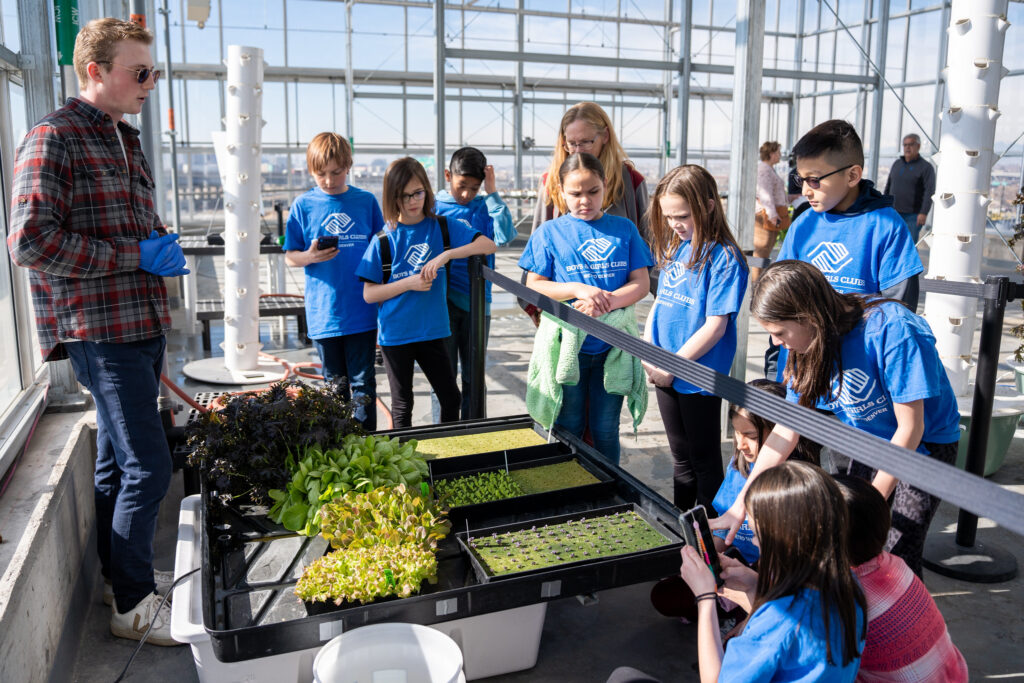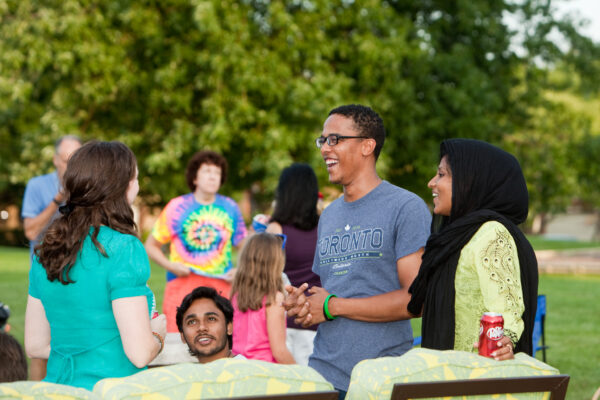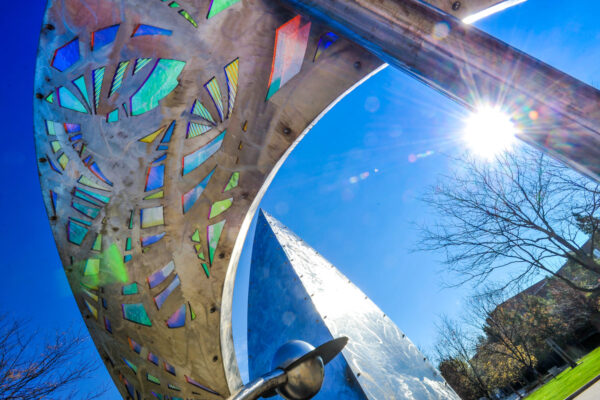The fact that Colorado is among the top states in the country in the percentage of adults who have completed at least a bachelor’s degree is a great bragging point for educators and boosters of our communities. But it’s also misleading.
The truth is that our state and its economy benefit from the considerable number of people who come here for college and then stay, as well as those who arrive with degrees in hand. Our high school graduates are actually less likely to enroll in college than are those in many other parts of the country. Just under half of Colorado’s high school class of 2021 enrolled in college the next fall, compared with a national average of nearly 62 percent. And, more disturbingly, the chance that a child born here will attend college or complete a degree varies dramatically by race and family background.
We can—and we must—do better.
At the Colorado State University (CSU) System, we’re trying a different approach with a new model for engaging with students, families, and a wide range of partners. Fifteen years ago, we started imagining a one-of-a-kind public campus that doesn’t grant degrees but instead throws open its doors and invites the community to come inside and explore learning about food, water, and human and animal health.
This year, we completed that new campus in Denver: CSU Spur. What began as a what-if conversation has since come into its own as a three-building campus that makes hands-on learning and inspiration available to everyone—for free. We want future leaders to fall in love with learning. We want them to know that they can make a change in the world and that higher education is not only open to them but is also for them.
Our final building at the National Western Center opened this past January. In recent weeks, we put the finishing touches on the campus, which included the Backyard, an outdoor space that melds research and art to look toward a sustainable future. The campus highlights social and environmental challenges looming at local to global scales, and yet the overall goal goes beyond the crisis of the moment or the need to find a particular solution.

Instead, the vision is about people and a role for higher education that builds on work we are already doing to educate and inspire students, conduct research, and share knowledge. With CSU Spur, we are presenting a new model for engaging learners of all ages in research and problem solving, and for bringing a widening group of young people into this critical work.
It’s an audacious goal, and it’s motivated by troubling statistics.
Today’s college completion rates are tied to the experiences and expectations of babies born more than two decades ago. Looking back, we see that babies born in Colorado in 1997, for example, had a one in three chance of graduating from college, a one in four chance of attending college but not getting a degree, and a 42 percent chance of not going to college at all.
A characteristic shared by many in this final group is that they would have been the first generation from their families to attend college. First-generation students attend college at lower rates than their peers; when they do attend, they graduate far less often. They are also critical in the higher education landscape when it comes to providing access and opportunity: many are students of color; military learners; rural students; or students who have other, intersectional identities. All of these have historically been underrepresented in higher education.
In fact, for babies born in 1997 who happened to be Black or Hispanic, or who were from another underrepresented group, the odds of college completion change dramatically to a one in six chance of graduating and a similar chance of attending college but not getting a degree. For these babies, the chances of not going to college at all increases to nearly two in three, reflecting in many cases life and educational experiences that keep college from being an option.
Similar disparities exist across the country, a source of shame for all of us in higher education. And yet it’s easy to look away from these issues, dismissing them as the result of K–12 or societal problems while expecting community colleges to serve as the access portal. The simplest approach is to go about our business as we have before, resisting change, and ignoring the possibility that there could be new and better ways to connect with communities and move the needle on college attendance and success.
We started welcoming visitors to CSU Spur in January 2022 after completing the health-focused Vida building. The campus expanded in the past year with the opening of the food-themed Terra building in June and then the completion of Hydro, a building focused on water, in January. We’ve now hosted close to 9,000 pre-K–12 students from schools in Colorado and beyond for facilitated visits. In all, we’ve already welcomed more than 50,000 visitors—including families, youth with various groups, area residents, rural partners, business and industry professionals, and many others.
We want every student in Colorado to come through these buildings each year they’re in school. We want them to be motivated by these great global challenges. We want them to see people like them working in careers they didn’t yet know existed. We want them to go home so excited they simply cannot stop talking at dinner. And we want them show up at school the next day with newfound motivation.
Our model involves putting science—and career possibilities—on a stage. We did that in part by strategically using glass and technology throughout the buildings. Research spaces are visible and often open to the public, and there are opportunities across the Spur campus for visitors to interact with scientists and learn about their career paths. They can see the tomatoes, peppers, and herbs growing in the research green roof’s salsa garden or watch therapy sessions in progress at the Temple Grandin Equine Center.
We have amazing partners in this work, including Denver Water, which opened a new, highly visible water-quality lab in Hydro. The facility serves to inform the public while providing capacity for more than 200,000 tests each year to monitor the quality of water before treatment and after it is prepared for distribution to customers across the metropolitan area.
In Vida, the Dumb Friends League—Colorado’s largest animal welfare nonprofit—runs a unique veterinary hospital. It includes glass-paneled operating rooms equipped with video cameras, and it serves the community by providing donor-subsidized care for companion animals. Our new, system-wide partnership with College Track—a national nonprofit focused on college and career success—brings participating Denver high school students to CSU Spur each day for targeted college preparatory programming and career discovery. The partnership builds on our work in support of first-generation students, and College Track participants will have access to a new pathway to pursue bachelor’s degrees at any of the CSU System campuses: CSU, CSU Pueblo, and CSU Global.
Our newly opened outdoor space exemplifies the CSU Spur approach, which offers multiple pathways toward engagement and understanding. The Backyard provides an area for groups to relax and enjoy access to the nearby South Platte River, which is the focus of ongoing restoration efforts, and its landscaped grounds feature native plants and public art arranged around a model of the four major river systems that originate in Colorado’s mountains. A child-friendly pump enables visitors to explore the dispersal of rainfall across the state while also cooling down on hot summer days. And the Backyard is also a research space: two CSU faculty members, one in engineering and the other in agriculture, are just starting a four-year study to assess the growth of plants irrigated with stormwater collected at the National Western Center.
CSU Spur is now fully open, but the real work is just beginning. We hope this campus will ignite the curiosity of children from both urban and rural backgrounds who want to know more about how food grows, where our water comes from, and how to keep animals healthy. We hope this campus becomes a treasured partner with our state’s K–12 schools and that it becomes a hub for innovative engagement with industries and business around pressing research challenges.
But most of all, we hope and believe that CSU Spur will make a difference in the life of a child—actually, in the lives of thousands of children—who may begin to see their own dreams and futures more clearly after spending time on our campus.
If you have any questions or comments about this blog post, please contact us.



